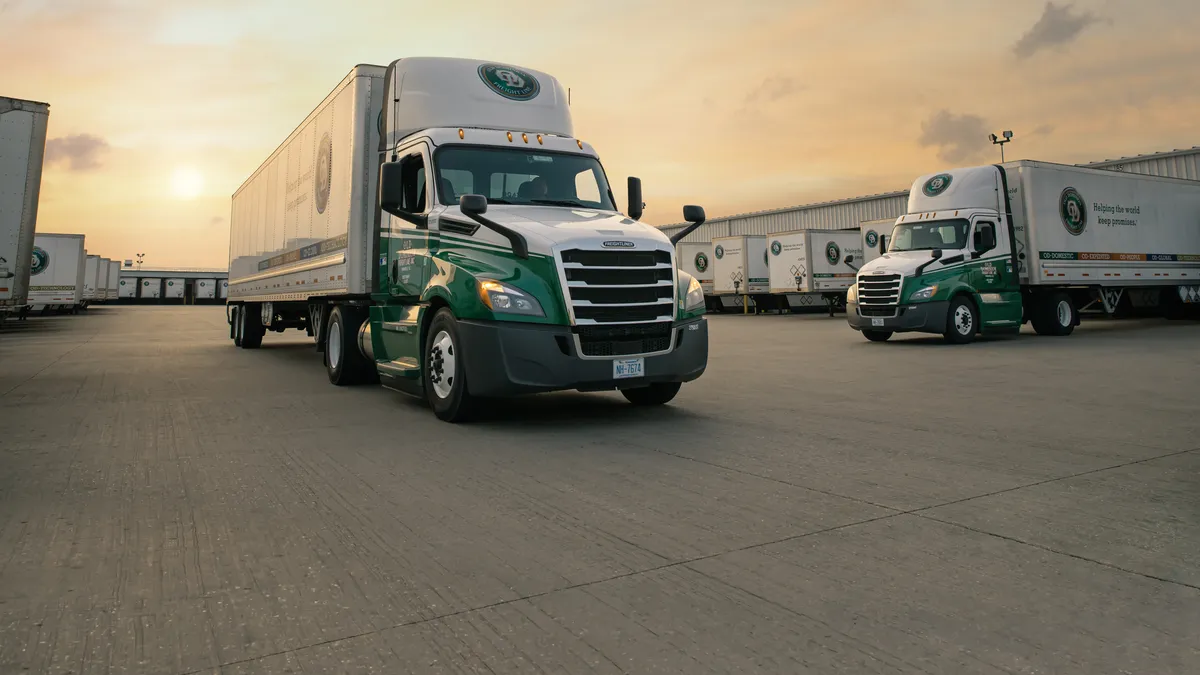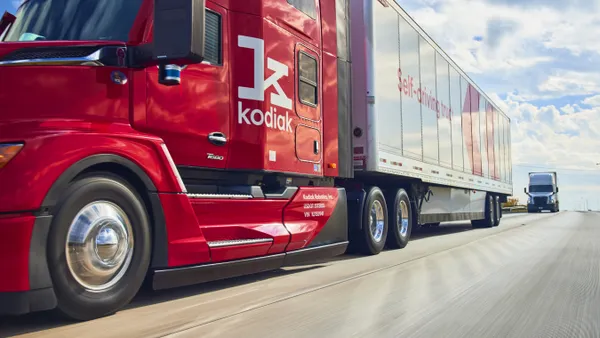Dive Brief:
- Old Dominion Freight Line’s operating income dropped 20.7% year over year to $334 million in the fourth quarter, as drops in shipments and tonnage reflected ongoing demand softness, the carrier reported Wednesday.
- But industrial business outperformed retail demand in the fourth quarter “for the first time in a while,” CFO Adam Satterfield said on a Q4 earnings call Wednesday morning. That bucked a trend of manufacturing demand weakness that has plagued the industry during a two-year freight recession.
- “We'll just continue to stay engaged with those customers and obviously be there for them when they need us,” Satterfield said. “And we’d love to see increased business levels with our industrial-related customers.”
Dive Insight:
Like other carriers and industry observers, Thomasville, North Carolina-based Old Dominion expects the freight market to improve this year. President and CEO Marty Freeman forecast “not just growth but prosperity” in 2025 in a blog post last month.
Industrial demand improvement would play a big role, given that manufacturing shipments are typically heavier and more profitable than the retail shipments that carriers have been hauling more during a prolonged freight recession.
Shipments per day fell 7.6% YoY while weight per shipment dipped 0.7% YoY, Old Dominion said in an earnings report, resulting in an 8.2% YoY drop in tonnage during the quarter.
The carrier raised pricing by 4.9% in an annual general rate increase on Dec. 2. It opened four new service centers last year, with a pair of linehaul hubs and other facilities in construction or nearly complete that can open once demand returns, the CEO and CFO told analysts.
“Unless demand dictates, we don’t have to open any,” Satterfield said on the call. “There’s a lot of cost that goes hand-in-hand with a service center opening.”
The CFO said he expects more opportunities for volume growth this year on multiple fronts, including industrial and third-party logistics demand pickups along with rising truckload rates that could bring back lost freight to LTL carriers.
“That truckload market, as it gets better, that's going to create LTL opportunities, but also we've got a structural advantage against our other competitors,” Satterfield said. “Many of our competitors use an awful lot of truckload substitution for their linehaul network, and so when that rate environment starts increasing, their costs will be increasing, so they typically have to raise rates much higher than us.”













